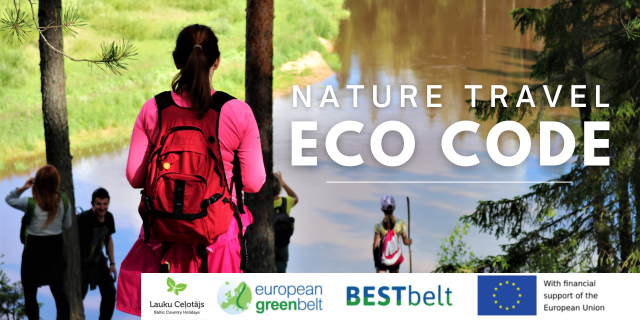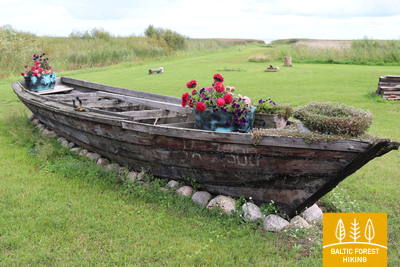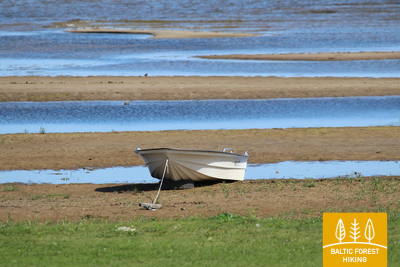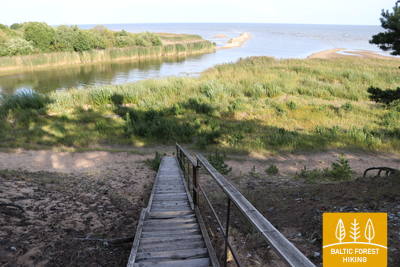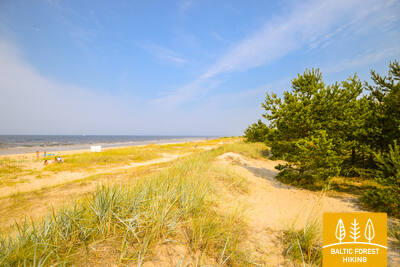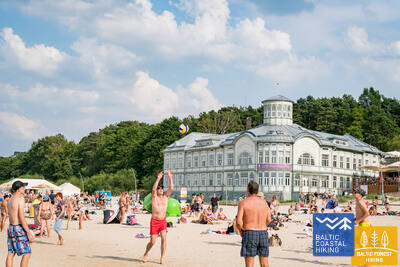Baltic Forest Hiking - Winter bliss
 Section 25. Kavastu‒Varnja.
Section 25. Kavastu‒Varnja.
Towards the Varnja old believers’ village
The Forest Trail has been circling around the Emajõe-Suursoo (a part of the Peipsiveere nature reserve) wetland for three days now. The most interesting part of the walk is the section between Vanaussaia and Varnja, where the Forest Trail runs along small rural roads. Before Varnja it reaches the shore of Lake Peipus (Peipsi), and here you can really feel the true size of the lake. The following distance from Varnja to Remniku along the shores of Lake Peipus and the surrounding territory will take about one week. Over this week, the hikers will learn more about the traditional culture of Eastern Estonia, such as onion cultivation, fishing, culinary heritage, crafts and the culture of the Old Believers.
In the Emajegi-Suursoo bog, there are winter trails currently used only by animals, but in earlier times, they were important land routes that helped shorten otherwise long distances around the edges of the bog. In cold winters, you can embark on an adventure along these winter trails with a hiking guide, who can be found at the Emajegi-Suursoo center.
 Section 26. Varnja‒Alatskivi.
Section 26. Varnja‒Alatskivi.
Visiting the onion farmers of Lake Peipus
A scenic and tradition-rich stretch of the Forest Trail symbolised by the onion. Onions were brought to the region by Old Believers in the 17th century. Ladies and gentlemen selling home-made onion strings on the roadside have become somewhat of a business card of the villages. The villages on the twenty-four kilometre stretch of road between Varnja and Kallaste are connected by the tourist route called Onion Road. The landscape is decorated by colourful wooden houses, small fish shops and a restaurant where you can enjoy tea made in the samovar, true to the traditions of Old Believers. The fish vendace (rääbis) from Lake Peipus is served throughout the year.
 Section 27. Alatskivi‒Rannamõisa.
Section 27. Alatskivi‒Rannamõisa.
Smoked fish and onion pie – the culinary heritage of Lake Peipus
Alatskivi is a great place to try the traditional dishes of Lake Peipus, including the famous onion pie. After Alatskivi, the Forest Trail ascends to a higher ground, which offers beautiful views of Lake Peipus, and then descends to meet the shore of the lake again at Kallaste. In Kallaste, look out for the local fish restaurant and shop, and try smoked vendace (rääbis) as well as zander from Lake Peipus. The last part of this section leads along a road overlooking the lake.
 Section 28. Rannamõisa‒Mustvee.
Section 28. Rannamõisa‒Mustvee.
Through the vibrant villages on the shores of Lake Peipus to Mustvee
Onions, fish, villages that stretch out for several kilometres where the buildings are lined along the main street, ornate Old Believers' churches, small harbours with fishing boats and wooden houses, each painted in a different colour! Cafés, shops and a view of Lake Peipus, which looks more like a sea rather than a lake. That is how you could describe this section of the Forest Trail. For eight kilometres from Kasepää to Mustvee, the Forest Trail passes through small coastal villages, offering a pleasant change for those who have walked for a longer period of time.
 Section 31. Lohusuu‒Kuru.
Section 31. Lohusuu‒Kuru.
Through the mushroom and berry forests on the northern shore of Lake Peipus
The first half of this section leads through magnificent coniferous forests, especially in the Järvevälja landscape reserve, where the trail is surrounded by beautiful dunes in the north and a raised bog in the south. It is well worth visiting the kiosk at Rannapungerja to buy smoked fished – the Lake Peipus vendace (rääbis) and some local farm produce. The Forest Trail crosses the Rannapungerja River via the motorway bridge and comes to the shores of Lake Peipus at Kauksi. There is a picnic area to cosy up and eat the fish you’ve brought along. Here, the shores of Lake Peipus resemble a magnificent beach surrounded by beautiful pine-covered dunes.
 Section 100. Bigauņciems – Dubulti.
Section 100. Bigauņciems – Dubulti.
The historic resort of Jūrmala
In Bigauņciema village, you can clearly see the whole length of the Jūrmala coast. The first third of this day’s itinerary is part of the Ķemeri National Park where you can get to know historic fishing villages, the Ragaciems village fishing area with net huts and a fish market, dune habitats, as well as watch birds in the estuary of the Starpiņupe River. Starting from Jaunķemeri to Dubulti, the walk takes you across the widest sandy beach of the Gulf of Riga through the historic resort in Jūrmala and the longest city in Latvia. Keep in mind that on warm and sunny summer days there will be a lot of beachgoers.
 Section 101. Dubulti - Lielupe - Bulduri.
Section 101. Dubulti - Lielupe - Bulduri.
The Most Popular Beaches in Latvia
The widest sandy beach of the Gulf of Riga stretches from Dubulti to the Lielupe River. It is the main asset of the Jūrmala resort offering many beach cafés and different recreational possibilities. The coastal dune forests are permeated with a dense web of trails suitable for walking and stick-walking. The part of the Baltic Coastal Hiking Route located between the beach of the Lielupe River and Jūrmala beach is part of the Ragakāpa Nature Park. From here, you can easily get back to Bulduri by taking Bulduri prospekts and the 5th line.









